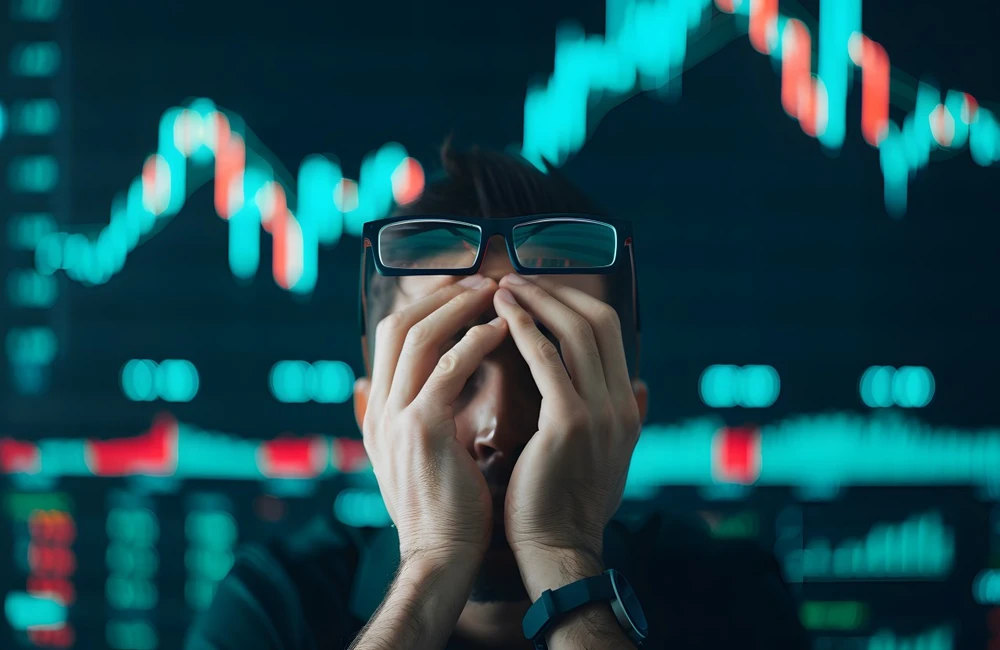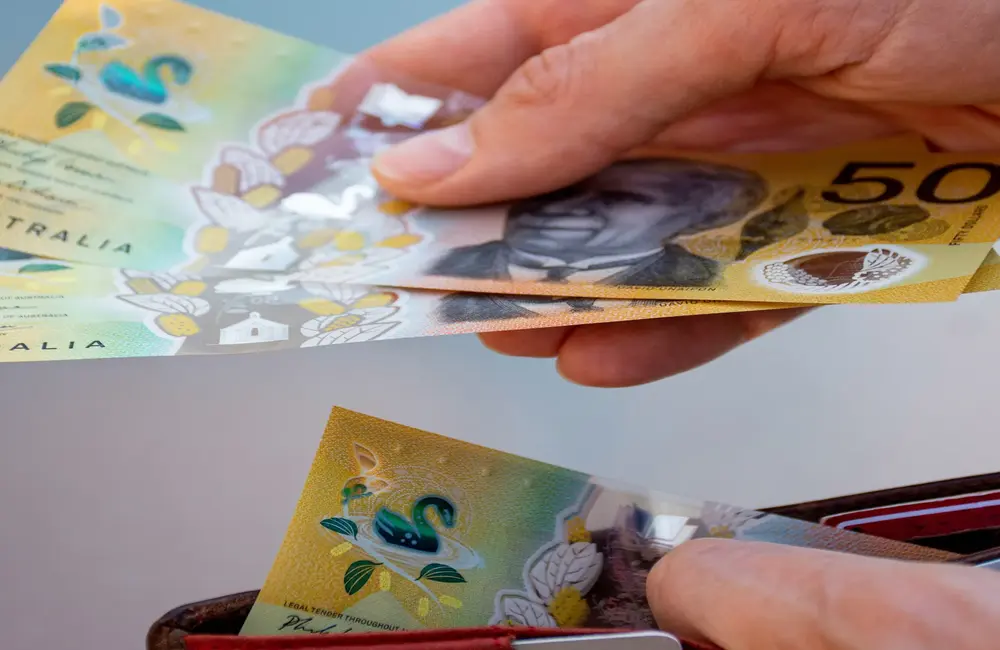ASX futures rose 77 points or 1.1 per cent to 7245 at 8:00 am on Friday, suggesting an open up more than outweighing losses yesterday.
US indexes were choppy in the session’s early going but gained momentum. The S&P 500 was up 1.8 percent and the tech-heavy Nasdaq Composite added 2.7 percent, with Amazon, Alphabet and Netflix each up by more than 3 percent. The Dow Jones Industrial Average climbed 1.3%. Big stock indexes fell Wednesday to kick off the month.
Investors have had a difficult time in recent months gauging how much and how quickly the Federal Reserve will raise interest rates in a bid to cool inflation. Some money managers fret that when that policy loosening tightens, it could stall the economy or shove the U.S. into recession. Supply-chain disruptions already exacerbated by the pandemic have also been impacted by the war into Ukraine and China’s zero-Covid strategy, as rising analyses have added to the price of energy, meals and other commodities.
“The market went up too much too soon because of all the stimulus, liquidity and COVID-19,” said Joseph Zappia, principal and co-chief investment officer at LVW Advisors. “Prices were rising much more quickly than earnings for a good part of that and now that money has got to come out of the system.”
At home, the S&P/ASX 200 dropped 0.8% to 7175.9 on Thursday, going negative for the week, weighed down by banking and tech stocks.
The benchmark index trailed a negative lead from US equities, which dropped on worries about the speed of interest-rate increases, and their implications for growth.
Westpac, NAB, Commonwealth, ANZ and Macquarie declined between 0.7% and 2.7%. Insurers and wealth managers also declined.
The volatile tech sector lost 2.5%, with WiseTech, Xero and Block surrendering between 2.0% and 4.95%.
Energy and utilities were the lone gainers, up after Australia’s energy market operator flagged tight gas supply. Lithium miners Pilbara and Allkem shed 0.9% and 1.4%, respectively, in the wake of a double-digit rout on Wednesday in the once-sizzling battery metals sector.
In the commodity markets, Brent crude oil added 1.1% to US$117.61 a barrel as Saudi Arabia suggested it would compensate for supply shortfalls brought about by sanctions against Russia. Iron ore jumped 5.2% to US$143.65. Gold gained 0.1%, to US$1872.90.
Local bonds traded further off and the yield on Australian 2 Year government bonds rose to 2.59% and the 10 Year to 3.49%. Overseas, the US Treasury notes with a 2-year maturity fell to a yield of 2.63% and the 10-year US Treasury notes fell to 2.91%.
The Australian dollar was at 72.63 US cents at 7:00am, compared with the previous close of 71.72 US cents. The Wall Street Journal Dollar Index, which measures the US dollar against 16 other currencies fell to 94.48.
Asia
China stocks finished the session higher, with Chinese central bank officials reiterating a commitment to help shore up the country’s economy and unveiling a raft of specific financing support measures for different industries and companies. The Shanghai Composite Index added 0.4% to close at 3,195.46 and the Shenzhen Composite Index gained 0.7% to 2,026.51. The tech-heavy ChiNext Price Index increased the most, rising 1.2% to 2458.26. The auto sector, which has been at the heart of the government’s consumption stimulus policies, is also well positioned to continue its recent momentum and lead gains.
Hong Kong’s Hang Seng index finished 1.0% down at 21082.13, burdened by concerns over a firmer greenback and robust US Treasury yields. Investor sentiment was also weighed down by news of additional Covid-19 sub-variant cases in Hong Kong, and an in-line Caixin PMI reading from China Wednesday which suggested further headwinds for the country’s smaller manufacturers, IG market analyst Yeap Jun Rong says in a note. Pharmaceutical stocks were the biggest losers, with CSPC pharmaceutical down 5.2% and Sino Biopharmaceutical losing 4.1%. The stock prices of Chinese property developers Jiayuan International (HKG:2768) and Central China Real Estate (HKG:0832) rose 7.1% and 15%, respectively, after they announced plans to raise funds to pay down debt. The Hong Kong stock exchange will be closed on Friday for a public holiday.
Japanese equities closed lower, weighed down by losses in tech and pharmaceutical stocks, as worries persisted about higher cost of borrowing and materials. Fujitsu Ltd. fell 4.4% and Astellas Pharma slipped 4.1%. In contrast, Kansai Paint jumped 10.5% after announcing a plan to sell its Africa operation. The Nikkei Stock Average lost 0.2% to end at 27413.88.
Europe
European stocks have increased, with the pan-European Stoxx Europe 600 index 0.6% higher in late trade, though trade is subdued with UK markets shuttered for a public holiday. Consumer goods and industrial stocks advanced, while oil-linked stocks declined. French cognac maker Remy Cointreau rose 4.1% after posting a jump in fiscal 2022 profit and reporting strong 1Q sales, and construction firm Saint-Gobain was up 4.8% on an upbeat earnings outlook. But worries about high inflation and the prospect of interest-rate rises, both of which could sap economic growth, hangover investors and keep a lid on gains. Germany’s DAX climbed 1% and France’s CAC 40 gained 1.3%.
North America
Stocks climbed, and all three major US indexes closed on Thursday on pace to finish the week with gains.
US indexes flipped between gains and losses in the morning before gathering steam. The broad-based S&P 500 rose 1.8 percent and the tech-heavy Nasdaq Composite 2.7 percent. The Dow Jones Industrial Average was up 1.3%. Stock indexes fell Wednesday to kick off the month.
In recent months, investors have grappled with how much, and how fast, the Federal Reserve will raise interest rates in an effort to cool inflation. Some money managers worry that tightening of monetary policy could slow the economy or even push the US into recession. Pandemic-fueled supply-chain disruptions have been compounded by the war in Ukraine and China’s zero-Covid strategy, leading to the cost of energy, food and other commodities.
Other investors said they saw the latest data showing the US economy softening and inflation easing, indicating the central bank may not need to be as aggressive as already planned. Federal Reserve Vice Chairwoman Lael Brainard on Thursday said it would likely be appropriate to raise interest rates by half percentage point at the Fed’s next two meetings, but declined to pledge a slower pace of increases at more distant meetings.
Ten of the 11 sectors in the S&P 500 climbed Thursday, led by the consumer discretionary, communication services and information technologies sectors, which each added at least 2.4%. Consumer strength and declining valuations for stocks have improved the outlook for stocks, which have broadly fallen in 2022, said Aoifinn Devitt, chief investment officer at Moneta.
“The word on the street is that this is a good entry point that equities have sold off so much that they’ve been overdone,” Ms. Devitt said. Her firm has increased its positions in inflation-hedging assets like real estate and commodities.
Crude gained after the Organization of the Petroleum Exporting Countries and non-OPEC oil producers led by Russia reached an agreement at a meeting Thursday to increase oil production by more than expected. The US and Europe have urged the group, known as OPEC, to increase crude production, as Russia’s invasion of Ukraine has sent oil prices surging.
Futures for Brent crude, the global oil benchmark, closed Thursday up $1.32 a barrel, or 1.1 percent, at $117.61.
“The anxiety is that demand continues to exceed supply, and that this increase in supply doesn’t close the gap between demand and supply,” said Peter E. Klingelhofer, managing director, investment management at the investment advisory firm Hamilton Capital in Columbus, Ohio. His firm is overweight energy equities.
In bond markets, the yield on the benchmark 10-year US Treasury note fell to 2.914% on Thursday, breaking a two-day winning run. Prices and yields move in inverse relation.
Stocks have plunged this year, and investors are searching for signs that they finally bottomed out. Joseph Zappia, a principal and co-chief investment officer at LVW Advisers, said he is looking for signs of exhaustion from sellers, including advances on strong volumes and companies issuing bad news without dragging the broader market down.
All the stimulus, liquidity and Covid-19 made markets move up too much too fast. Prices surged far quicker than earnings for a better part of that and now a lot of that money just needs to come out of the system,” Mr. Zappia said. His firm has rotated into defensive sectors and out of discretionary stocks.
Investors are watching the labour market data. If Powell worries the labour market is overheating, there is a method to this as well. A tight labour market can contribute to inflation, as competition for workers strengthens wage-bargaining power.
The ADP employment report found that the private sector had added 128,000 jobs in May, fewer than the 299,000 economists surveyed by The Wall Street Journal had anticipated. Initial jobless claims fell to 200,000 last week compared with the previous week’s revised level of 211,000, the Labor Department said Thursday. The figure is considered a proxy for layoffs.
“It’s a very tough environment. There’s just so much going on here, and the dynamics are hard to read," said Peter Garnry, head of equity strategy at Saxo Bank. “We expect the Fed will have to be very hawkish to rein in inflation.”
Microsoft shares rebounded from early losses to close up $2.16, or 0.8 percent, at $274.58, moving in lockstep with the broader market. The software maker lowered sales and profit guidance for the current quarter, blaming the effect of foreign-exchange rates as the rising US dollar weighs. “The dollar this year has offered another margin challenge to some of these companies,” analysts said.
In other individual stocks, Chewy shares surged $5.69, or 24%, to $29.18 after the online pet-products retailer posted a surprise profit and predicted a revenue range that was largely above Wall Street estimates. MongoDB shares jumped $44.89, or 19 percent, to $286.70 after the database maker’s results surpassed Wall Street estimates. Veeva Systems rose $24.71, or 15 percent, to $192.55 after the cloud solutions company lifted its full year guidance on sales.
























